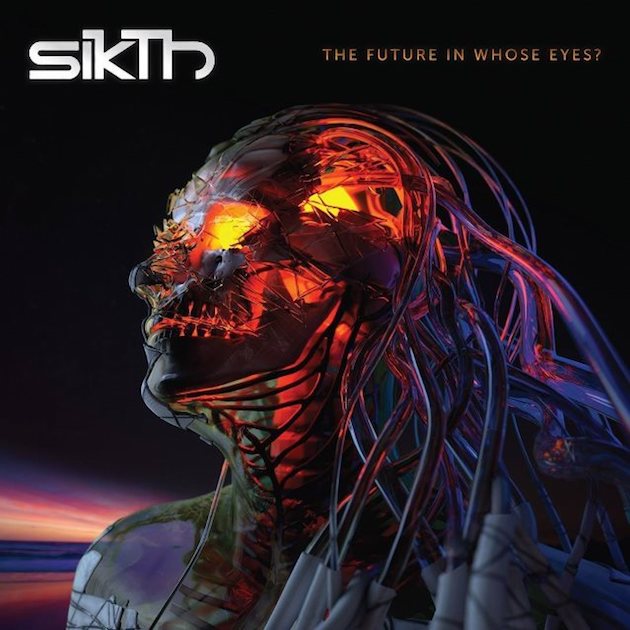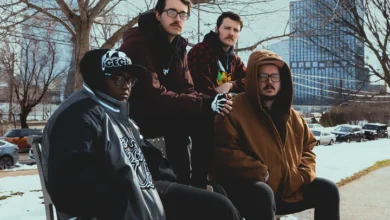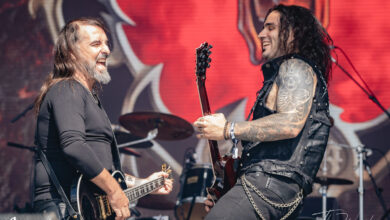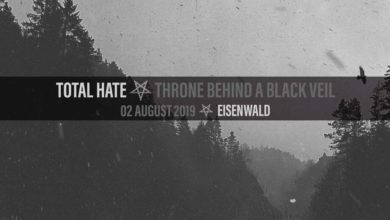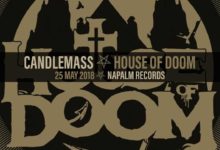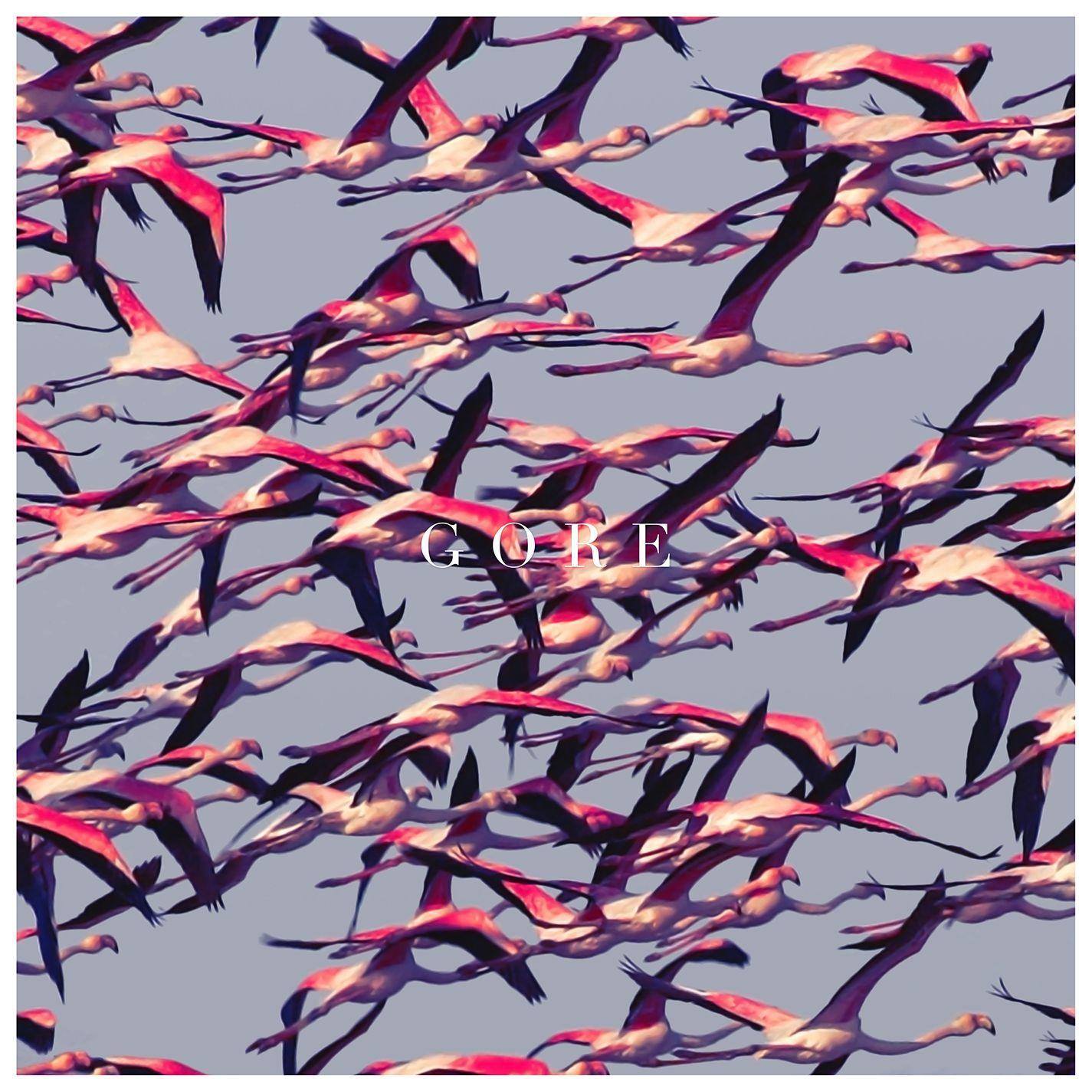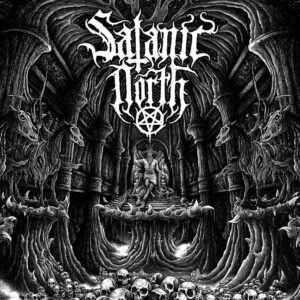 These days, black metal has splintered into many sub and fusion genres, but Finland’s Satanic North have offered a refreshing back-to-basics sound on their self-titled debut. 2025 is on the horizon, and the new year will mark 30 years since the formation of Ensiferum, the band that two of Satanic North’s members, Petri Lindroos and Janne Parvianen (both of whom joined in 2004) remain active in.
These days, black metal has splintered into many sub and fusion genres, but Finland’s Satanic North have offered a refreshing back-to-basics sound on their self-titled debut. 2025 is on the horizon, and the new year will mark 30 years since the formation of Ensiferum, the band that two of Satanic North’s members, Petri Lindroos and Janne Parvianen (both of whom joined in 2004) remain active in.
While Ensiferum is known for a folkier, more experimental blend of black metal, Satanic North opt for an approach that, as alluded to earlier, keeps things straightforward. Their sound consists of raw, treble heavy guitars, near-breakneck blastbeats and screaming vocals alluding to unbridled chaos, reminiscent of black metal’s formative period in the mid-90s. Parvianen (under the moniker Abyssor) resumes his role as drummer, but this time, Lindroos (IIT Caprae) enters new territory, switching from guitar to bass, and from lead vocals to support. Their rhythm bed is the ideal bolsterer for frontman Von Occult and guitarist Skomorokh, who made their recording debut on the band’s 2022 debut demo, Four Demons.
On the self-titled album, its production is a great starting point for its presentation, as it brings noticeable warmth to the low ends and adds a similar amount of sheen to the highs. Its opener and first single, “War,” begins with an initially bone-dry, fittingly militant percussion before launching into a rapid burst of machinegun-esque shots. Its main riff maintains its pacing, but changes in various melodic transpositions yet somehow fits seamlessly amidst the involvement. From within. Von Occult’s rage-filled vocals seem to convey a type of nostalgia – longing for the ‘good times’ of black metal’s burgeoning vitality, while also, per the negative definition, reopening old wounds while in in a state of oppression and melancholy. By the latter part of the song, the breakdown does well at highlighting the combined chug of the bass and guitar work alongside the drums. Next is “Arise” from their initial demo, which feels natural in its placement as the track to follow, showcasing speed and intensity without delay and features decent variation between its chord sequences and lead melodies. At its halfway point is where the melodic interplay between members begins to especially shine, each guitar blending and harmonizing with one another, alongside different expressions of screamed vocals. “Village,” the album’s third single, is a track I come back to from time to time. Its slower opening chord sequence, which reoccurs throughout the song, serves as a kind of hook that offsets its thrashier sections. Capping side one is “Hatred & Blasphemy,” a shorter and punchier track that somehow feels punkier in its delivery, yet still sustains the necessary energy for the album. Toward the latter part of the song, the vocals shift from guttural and more stationary range to high-pitched and shrieking, with the lead guitar employing a similar dynamic.
By the album’s second half, “Four Demons” kicks it off. Once the opener of the band’s demo, now it’s a track that does its part in continuing the album’s drive. In a thematic sense, this song feels tongue and cheek, referencing a person’s smile becoming a soulless grin when they become possessed. For an album track, it does have a catchy recurring riff that the drums demonstrably lock into. Like the previous song, this one features a peak of intensity, except it has a certain understandable campiness to it given its lyrical direction. As the second half progresses, its pacing is very well utilized. “Behind the Inverted Cross” may leave its stamp as the last single on the album (and second chronologically), but “Vultures” also has potential as a single in the engaging way it’s structured. It’s complemented tonally by an opening bell, and each instance of the drums and vocals feels like the buildup of looming dark clouds. When the gear shifts at the halfway point, there’s this overwhelming sense of dread, almost as if the listener is about to get swept up and simultaneously devoured. Then, toward the end of the song, when the main riff returns to its original state, it feels as if the listener had barely escaped the vulture’s clutches, with the final bell chime symbolizing the victim’s inevitable death. “Wolf” has plenty of melody to go along with the distortion, coming with an atmospheric sensibility in its intro that continues the album’s change of pace. There’s greater emphasis on the band locking in, with its chord sequences much more visible in the mix, and Lindroos’s bass work harmonizes the guitars with both speed and proficiency. Even the howl of the wolf at the end is impressive, since it not only fits thematically, but employs a similar asset in accordance with the pitch of the melody. The penultimate track, “Kohti Kuolemaa” is another highlight for the album, with its slower pace staying constant throughout much of its duration. Alongside the main riff, the equally hooky, Black Sabbath-tinged blues riff serves as a type of companion piece to the arrangement. When the latter riff enters its thrashy permutation halfway through the track, that’s when it takes off in a big way, particularly when the bass is briefly played solo and then launches into the rest of the involvement going forward. From there, it’s cool how the band proceeds to utilize that riff in different keys before returning it to its regular form to finish off the track. Interestingly, the album’s closer is “Satanic North,” which is also the band’s debut single. At first, it seemed like a track the band would reintroduce at the start, given the boost in its production values, and being the track that first gained the band an audience. However, the more I’ve considered its placement at this point, the more it seemed like an exclamatory statement that wraps the album succinctly.
Overall, Satanic North’s self-titled album is one that the band clearly had fun making, given the grandiose nature of its conveyed imagery, and the spontaneous, yet seamless flow of talent between each member. Even as I don’t subscribe to satanic beliefs myself, I appreciate it from a purely creative standpoint, as its sound harkens back to classic metal bands and aesthetics I’ve enjoyed over the years. I’m already curious to find out whether this will stand by itself as a singular project, or if the band has ideas in store for a future release next year!

